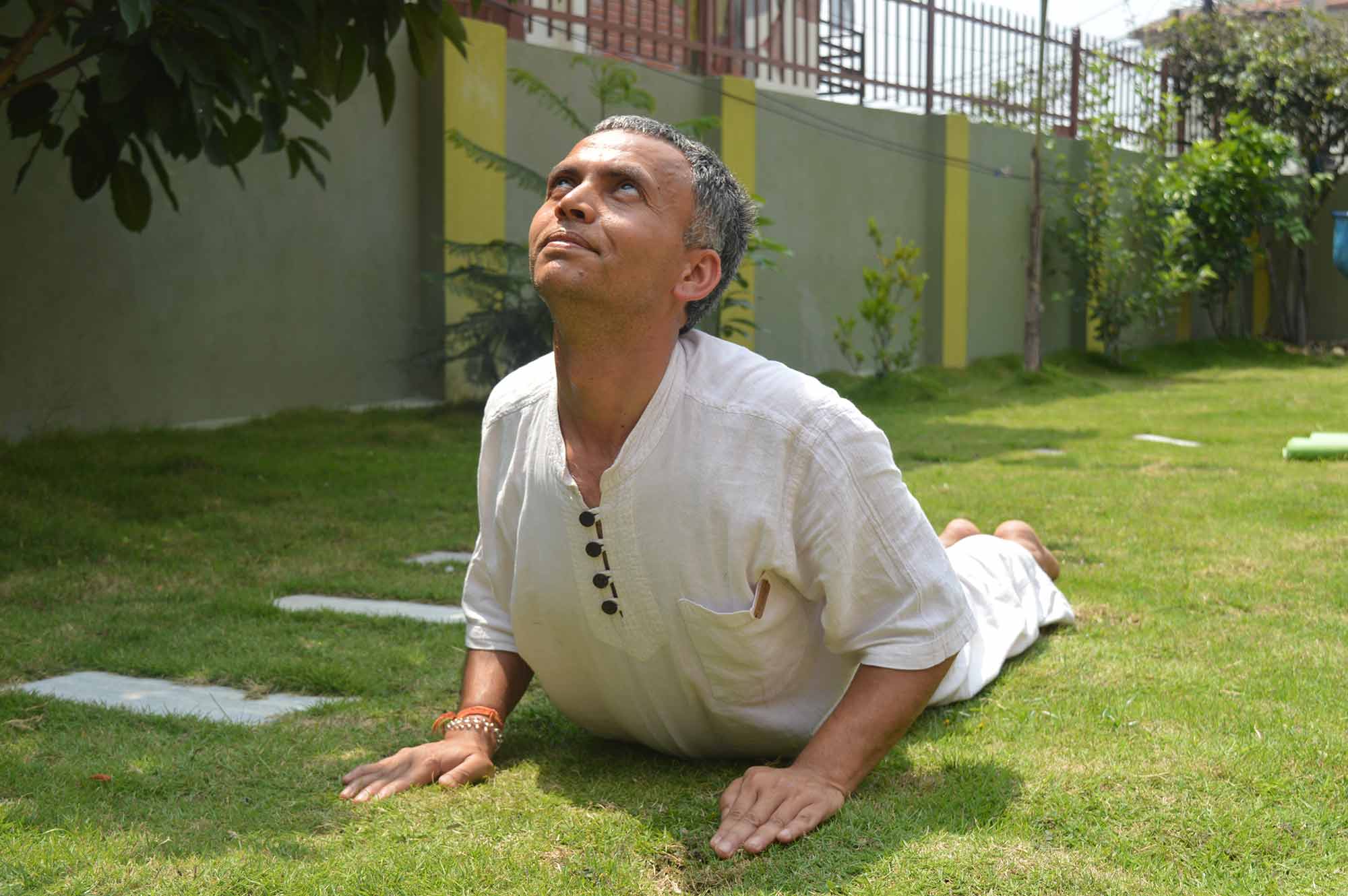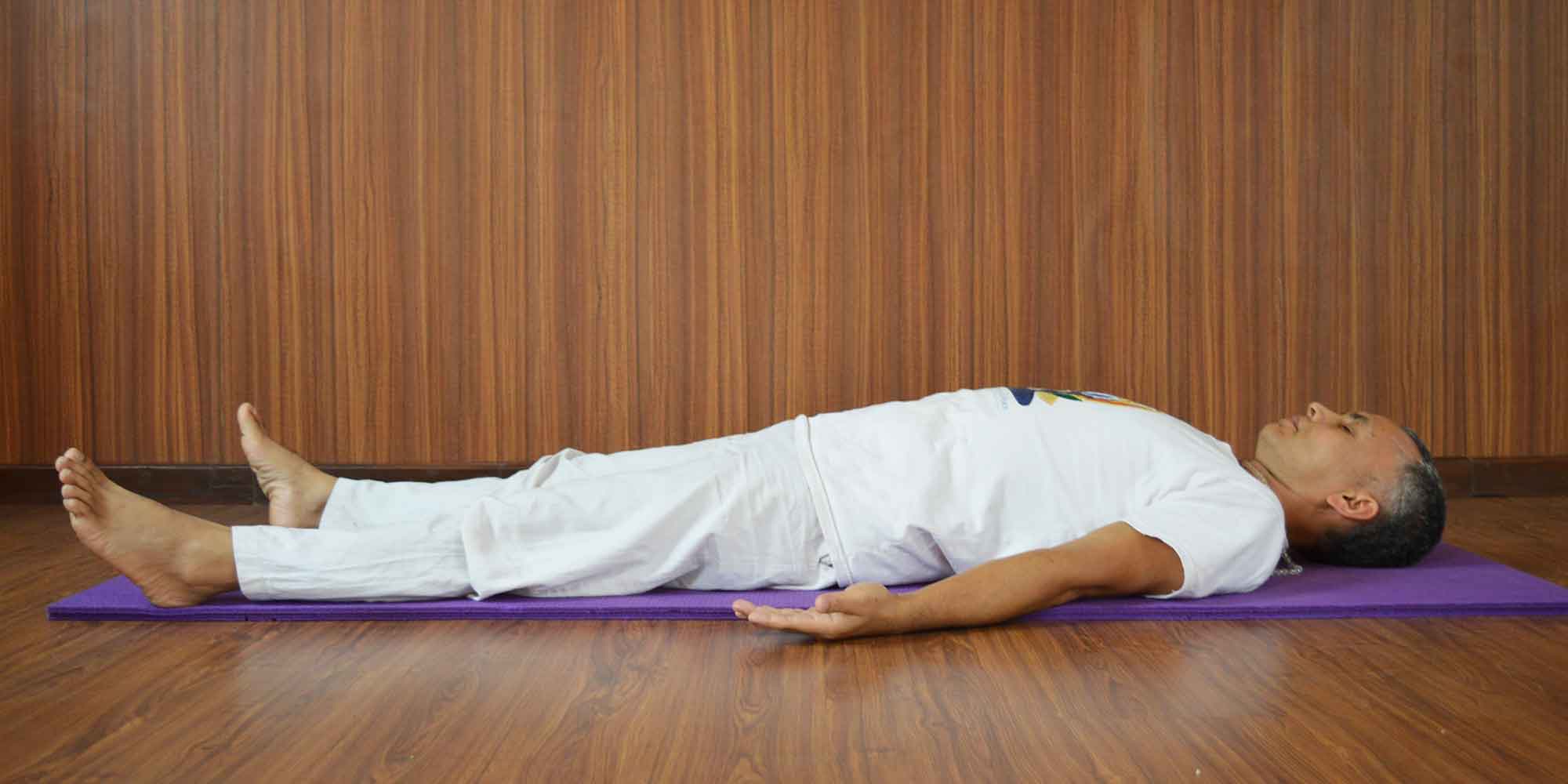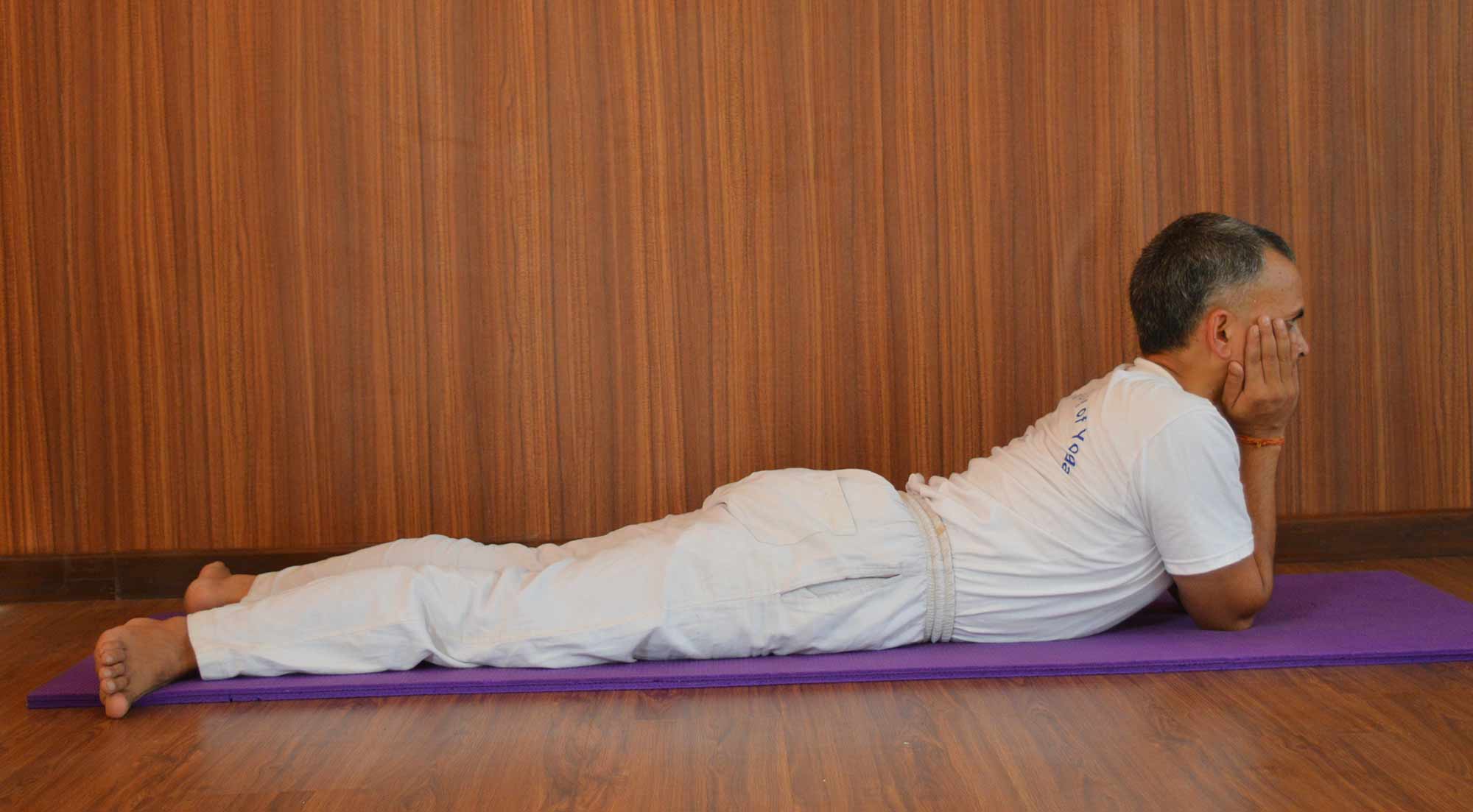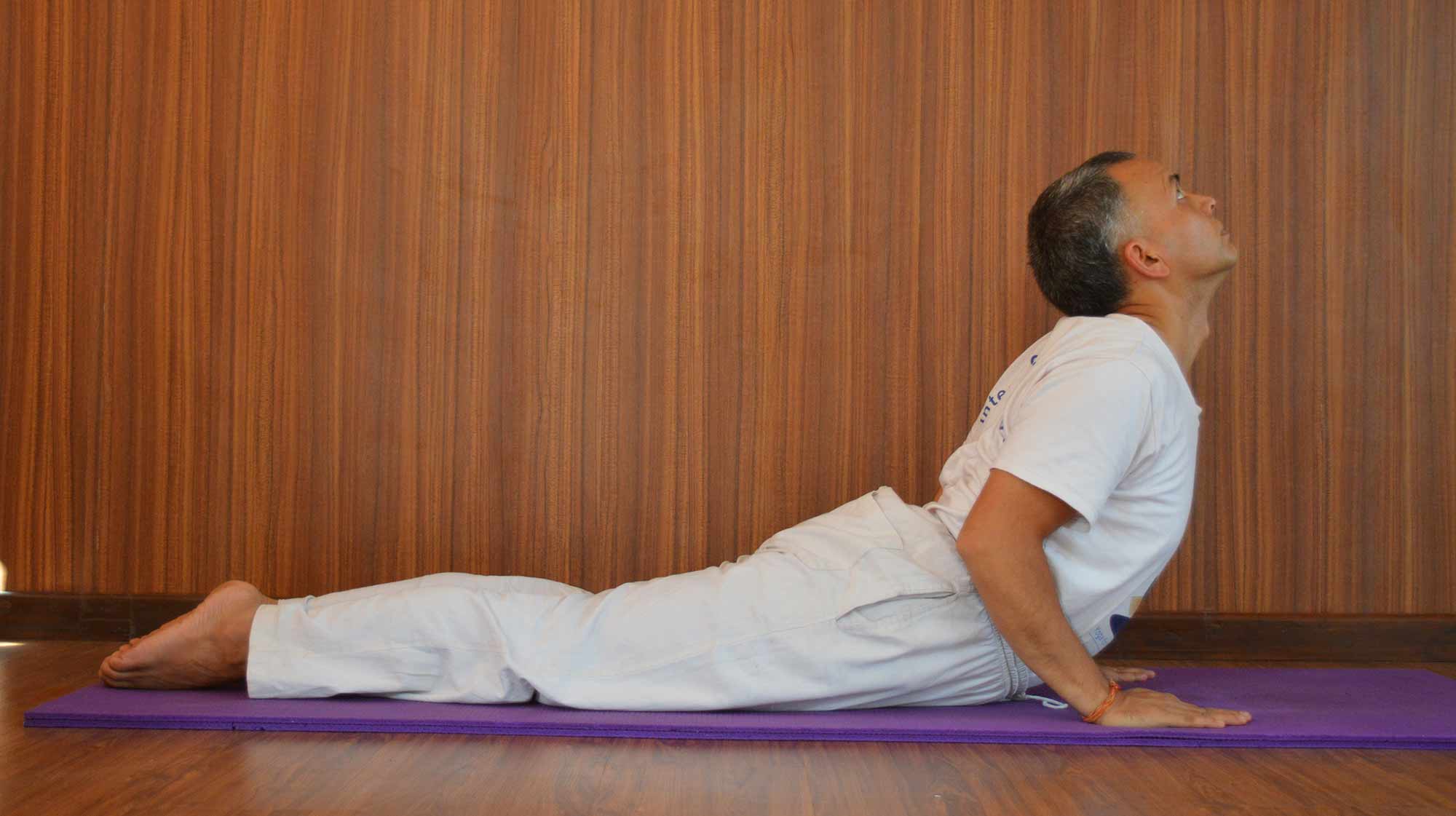
24 Sep 2021 HYN Himalayan Yoga Academy
Himalayan Yoga Academy presents an article on ‘Yoga Postures for Relaxation’ considering the hectic lifestyle of the individuals. Daily we go through a lot of task and activities that makes us stressed and fatigued. Our bodies and mind become tired and we lose a lot of energy. The whole body becomes tired and we always look for ways of relaxation. Our daily life has become influenced by these modern lifestyles of working like machines which have made us tired from the body to mind. We need these relaxation yogic asanas to energize our vital energies and feel the relaxation from the whole body to mind. So here are Yoga Postures for Relaxation.
- Shavasana (Corpse Pose)
- Makarasana (Crocodile Pose)
- Balasana (Child Pose)
- Bhujangasana (Cobra Pose)
- Supta Matsyendrasana (Reclining Fish Pose)
Yoga Postures for Relaxation
1. Shavasana (Corpse Pose)
Shavasana, ‘Shav’ – Corpse/dead body; Asana – Pose; Corpse Pose, or is an asana in hatha yoga and modern yoga as exercise. It is often used for relaxation at the end of a session. It is the usual pose for Yoga Nidra meditation as well. Shavasana is the Sanskrit name for an important restorative asana. It is a key component of asana practice in almost every yoga tradition. It is most commonly used at the end of a sequence as a means of relaxation and integration. This pose gets its name from the recumbent posture of a dead body. It is a position of rest and is usually practiced towards the end of a yoga session. A session that typically begins with activity and ends in rest; a space or pause when deep healing can take place.
Shavasana is believed to stimulate the Muladhara (root) chakra since the entire length of the body is connected with the earth. Energizing this chakra through shavasana is deeply grounding, and cultivates the inner stillness and stability necessary for personal growth. While giving a class the teacher can also chant a mantra and ask the students to focus on the sound and the vibrations it produces in the body. This is particularly helpful for beginner students who find it difficult to calm their minds. Shavasana is particularly useful for a full-body reset. If you can enter into 5 minutes of proper Shavasana, you can remove the fatigue and stress from the body, get back up energized ready to carry on.

2. Makarasana (Crocodile Pose)
Makaraasana (मकरासन, “makara posture”) is a Sanskrit word referring to a type of posture (Aasana) used in Yoga. The name comes from the Sanskrit मकर makara meaning “crocodile” and आसन Aasana meaning “posture” or “seat”. Makaraasana is described in the 17th-century Gheraṇḍa Saṁhitā (Chapter 2, Verse 40). It is one of the thirty-two Aasanas (postures) taught in the second chapter of the Gheraṇḍasaṃhitaa: “Lie prone, the chest touching the ground and the two legs stretched out. Hold the head with the two arms. This is Makaraasana that increases the heat of the body”.
Makaraasana is a very useful and effective Aasana that is for all levels of practitioners. After and before traveling, walking, working, and also driving for a long time, it prepares and gives instant relief. It is affordable for all. It is bed exercise. It is the best pose for low back pain and cervical spondylitis as well. This pose is best for relaxing after doing other Asana.

3. Balasana (Child Pose)
Balasana is an easy yoga asana that can even be performed by beginners. In Sanskrit, Bala means child and asana refers to one’s posture. Thus, this pose is also called Child Pose. It is a ‘counter’ asana for many asanas and is performed preceding and following Sirsasana as it is a resting pose. This is often the first pose taught to beginners. It is easy to follow and highly beneficial. If perfectly performed, the body faces the floor in the fetal position (thus the name). It is also called Garbhasana and Shashankasana.
The key to yoga is regulated breathing. If you get that part right, the rest just flows. T. Krishnamacharya, in his paper ‘Salutation to the Teacher and the Eternal One,’ says, “One important thing to be constantly kept in mind when doing asanas is the regulation of the breath. It should be slow, thin, long, and steady: breathing through both nostrils with a rubbing sensation at the throat and through the esophagus, inhaling when coming to the straight posture, and exhaling when bending the body. ”This is one of the relaxation poses that relaxes your body.
4. Bhujangasana (Cobra Pose)
Bhujangasana (भुजंगासना) or the Cobra pose is one of the gentle backbends that helps relieve backache. It also helps in improving digestion and the overall health of the spine. Cobra pose is often used within a sun salutation or vinyasa as a transitional pose in a collection of asanas
Benefits
- Strengthens the back and legs
- Stretches the front of the body, opening the chest and shoulders
- Energizes and mobilizes the spine

5. Supta Matsyendrasana (Reclining Fish Pose)
Supine Spinal Twist — Supta Matsyendrasana (Soop-tah-MOTS-yen-drAA-SUN-aa) — is a restorative spinal twist, that lengthens and strengthens the spine while detoxifying the internal organs. Supta Matsyendrasana is a gentle posture that stretches the spine, shoulder, back, thighs, and neck and stimulates internal detoxifying processes, all while the body rests. Regular practice of Supta Natarajasana can relieve lower back pain and tight shoulders. The pose gets its name from the Sanskrit words, Supta, meaning supine or reclined, Matsya, meaning fish, Indra, meaning ruler, and asana, meaning pose.
Benefits
- Stretches the spine and quadriceps
- Massages the back and hips
- Lengthens, strengthens, and realigns the spine
- Encourages fresh blood flow to the internal organs
- Improves digestion
- Provides deep relaxation

During 200-hour, 300-hour, and 500-hour Yoga Teacher Training in Nepal, we highly focus on yoga asanas for various situations like relaxation, etc. The teaching of which asanas are beneficial for a particular situation and which are suitable for another situation. We teach the teachers standing, sitting, supine, and prone asanas and also balancing asanas where we separate the asanas based on people’s wants and demands. So the students during the yoga teacher training course at Himalayan Yoga Academy will be able to demonstrate these super relaxation asanas with proper management of the alignment.
